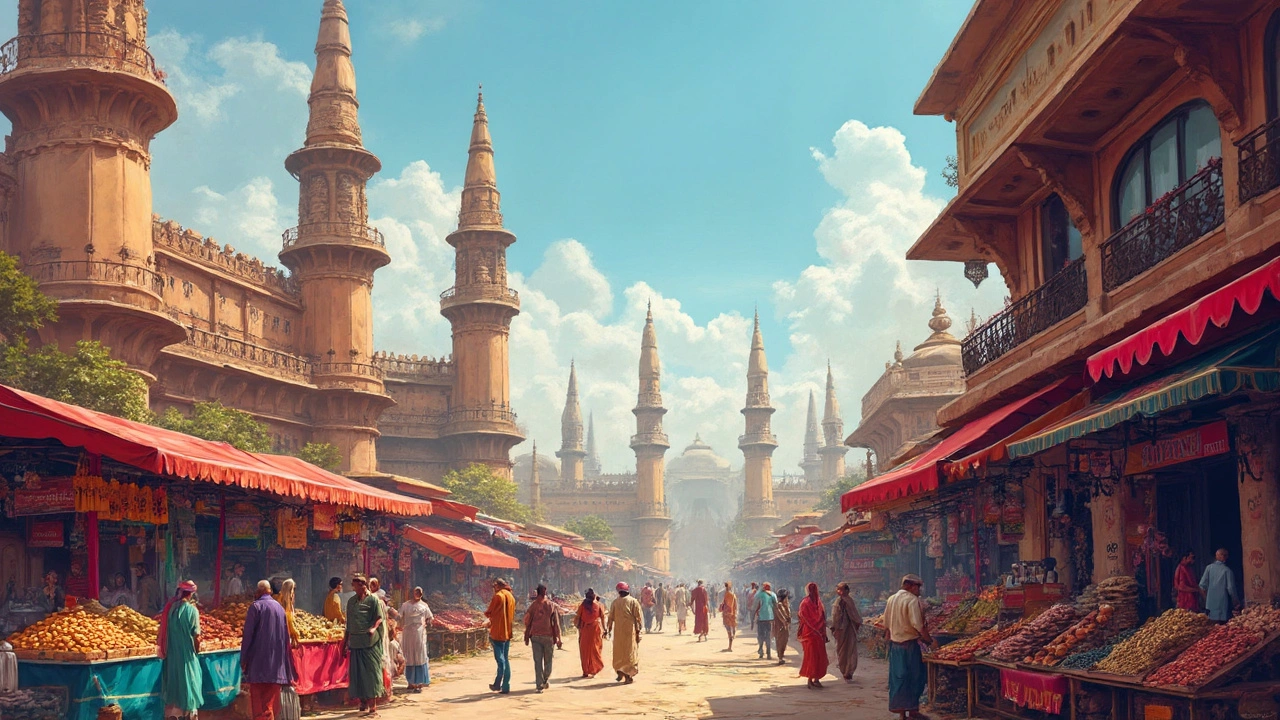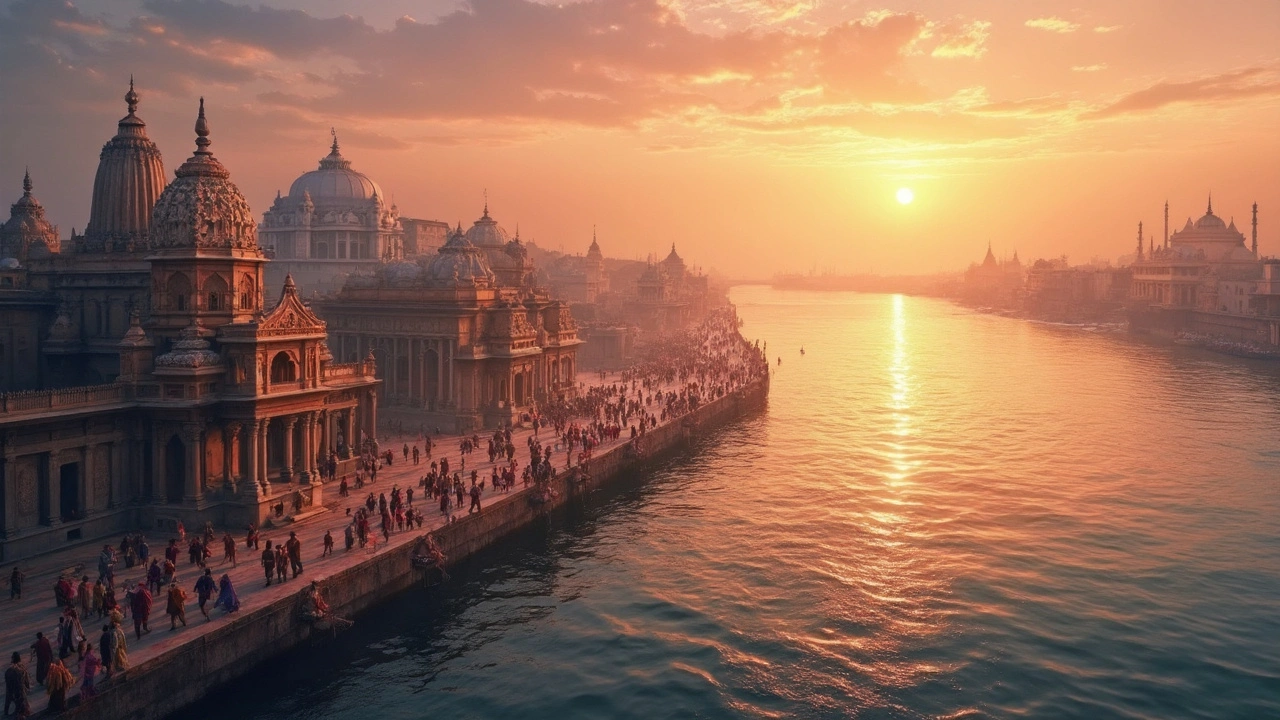Why Is Allahabad Now Called Prayag?
Ever wondered why Allahabad got renamed to Prayag? You're not alone. There's a fascinating story behind this shift that goes beyond simple rebranding. Historically, this city has been a vital hub of spirituality and culture in India. Known for the famous confluence of the Ganges, Yamuna, and the mythical Saraswati rivers, it's a key pilgrimage site.
Renaming Allahabad to Prayagraj happened in 2018, aiming to reflect its ancient identity more accurately. The change wasn't just about giving the city an old name back. It was about reconnecting it to its historical roots and cultural significance. This city has been a witness to crucial events in Indian history, and its alteration symbolizes a revival of its original spirit.
But what does this mean for you as a visitor? For starters, knowing its rich history and spiritual importance can enrich your travel experience. Understanding why the name Payag signifies 'place of offerings' can make the visit to the Triveni Sangam, where the rivers meet, more meaningful. And who wouldn't want to have a deeply connected and informed visit rather than just wandering through?
- Historical Background
- The Convergence of Rivers
- Significance of the Name Change
- Travel Tips for Prayagraj
Historical Background
Prayagraj, formerly known as Allahabad, has a rich tapestry of history woven into its very soul. It's not just a city; it's been a strategic point of interest for empires and leaders over centuries. Let's roll back in time to see how it all started.
It dates back to ancient texts like the Vedas and the Mahabharata where Prayag was mentioned as a sacred site. Historically, it's known for the grand Kumbh Mela, a massive festival attracting millions from around the globe. The Mughals, with Akbar in the limelight, are credited for renaming it to Allahabad in the late 16th century, merging a rich Hindu and Muslim cultural ethos.
Moving into the Mughal era, the city saw a pivot in its identity when Emperor Akbar in 1583 said, "This place is truly magnificent," and decided to name it Ilahabas, later evolving to Allahabad, meaning 'abode of God.' The Mughal influence was deeper than the name; it can still be seen in the architecture scattered across the city.
During British rule, Allahabad grew as a city of administrative significance. It became a key base in the Indian independence movement as it hosted sessions of the Indian National Congress. Personalities like Motilal Nehru and Jawaharlal Nehru are closely associated with the city, marking it as a nerve center for political ideas.
Deeper than its political past, Prayag or Prayagraj has always been a spiritual junction where the three sacred rivers meet. This location has been symbolic in many religious and spiritual texts, often referred to as the 'king of pilgrimage centres.'
All these layers of history highlight why the change from Allahabad to Prayagraj was more than just a renaming; it was a journey back to its roots. This blend of history makes Prayagraj a fascinating city, with each corner filled with tales of bygone eras—a feature that continues to draw historians, spiritual seekers, and curious travelers alike.
The Convergence of Rivers
Imagine standing at a spot known as Prayagraj, where three rivers come together — it's like witnessing a natural wonder meeting a spiritual journey. The Ganges, Yamuna, and the mystical Saraswati rivers converge here, each adding its own vibe to the place. This meeting point is called the Triveni Sangam, and it's the main reason Prayagraj holds such a special spot on the map for religious folks.
What makes the Ganges so special? It's not just any river; it’s revered as a goddess in Indian culture. Known for its purifying properties, a dip in the Ganges is believed to wash away one's sins. Right next to it, the Yamuna adds its own holy touch. While the Saraswati is a bit of a mystery, it's said to flow underground, representing knowledge. These rivers coming together are symbolic, merging different energies and beliefs.
Intriguingly, the Triveni Sangam is also the focal point for the grand Kumbh Mela, a massive religious gathering held every 12 years. Millions flock here to take a holy dip, adding to the energy and atmosphere of the place. Ever been to a gathering that’s centuries old? This is one of those, making you feel like a part of something greater than yourself.
The Experience of Visiting the Sangam
So what's it like to visit the Sangam? Most people aim for a boat ride to the actual confluence spot. This isn't just any boat ride — it’s an experience that encapsulates serenity, history, and spirituality. Picture this: the boatman steering through the gentle waves, the chants from nearby temples, and you, soaking it all in.
- Best Time to Visit: Just after monsoons, when water levels are good.
- Tip: Visit early morning or late afternoon for fewer crowds and a peaceful atmosphere.
Some may wonder if a single spot can really be that impactful, but ask anyone who’s been there. The convergence at Prayagraj is more than a geographical feature — it’s a manifestation of belief and history, deeply rooted in the spiritual ethos of India.

Significance of the Name Change
In 2018, a significant shift occurred when Allahabad was officially renamed to Prayagraj. This wasn't just an administrative update but a nod to the city's ancient roots and its longstanding heritage. So, why was this change so crucial?
Prayagraj is historically known as the 'place of offerings'. The name aligns with the city's profound religious and cultural importance, especially being home to the grand Kumbh Mela, one of the world's largest religious gatherings. This name carries the echo of the city's deep spiritual vibrance, where millions have historically gathered for centuries at the confluence of the rivers.
Restoring Historical Identity
The rationale behind the name change was to restore its connection with ancient texts and traditions. Before Mughal Emperor Akbar renamed it to Allahabad, or 'City of Allah', it was known as Prayag, frequently mentioned in sacred scriptures like the Vedas and Mahabharata.
Cultural Relevance
For many locals, reinstating the original name was more than just a change; it was a cultural revival, an attempt to preserve their city's historical essence. Every time 'Prayagraj' is uttered, it reawakens that rich past and reinstates its significance in the cultural map of India.
This move also aims at promoting tourism. By highlighting its ancient name, Prayagraj can boost its appeal among those interested in spiritual tourism, heritage visits, and history enthusiasts. Bringing back the former name has given the city a renewed identity both nationally and globally, inviting travelers to experience its unique blend of history and spirituality.
Travel Tips for Prayagraj
Planning a trip to Prayagraj, formerly known as Allahabad, is like stepping into a world where history meets spirituality. Here are some practical tips for making the most of your visit.
Best Time to Visit
The ideal time to visit Prayagraj is between October and March. These months have pleasant weather, making it perfect for sightseeing and outdoor activities without the scorching heat.
Getting Around
The city’s well-connected by roads, railway stations, and public transport options like buses and auto-rickshaws. If you prefer comfort, taxis and app-based ride services are also available. Remember, the Triveni Sangam, a major attraction, can be accessed by boat rides that offer stunning views.
Where to Stay
You'll find a range of accommodations from budget hostels to luxury hotels. Areas around Civil Lines are popular for their accessibility and amenities. Make sure to book in advance, especially if visiting during the Ardh Kumbh Mela festival.
Must-See Attractions
- Triveni Sangam: Witness the sacred confluence of rivers and partake in the spiritual rituals performed here.
- Allahabad Fort: This historic fort offers a glimpse into the Mughal architecture and is located near the Sangam.
- Anand Bhavan: The residence of the Nehru family, this place now serves as a museum showcasing India's struggle for independence.
- Khusro Bagh: A beautiful garden surrounding the tombs dating back to the Mughal era, perfect for a peaceful stroll.
Local Cuisine
No visit to Prayagraj is complete without tasting its local food. Sample some street food like chaat, samosas, and sweets from roadside stalls. Try traditional eateries for an authentic taste of regional cuisines.
Safety Tips
- Keep your valuables secure, especially in crowded areas.
- Be respectful of local customs and traditions, especially at religious sites.
- Stay hydrated and wear sunscreen if you're out during the day.
Whether you're drawn to its historical charm or spiritual energy, Prayagraj promises an enriching experience that combines the best of India's culture and heritage.





